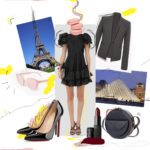- October 20, 2023
- FASHION + SHOPPING
The Sun, The Moon, and The Allure of Celestial Jewels
Embrace the energy of the mystic cosmos!
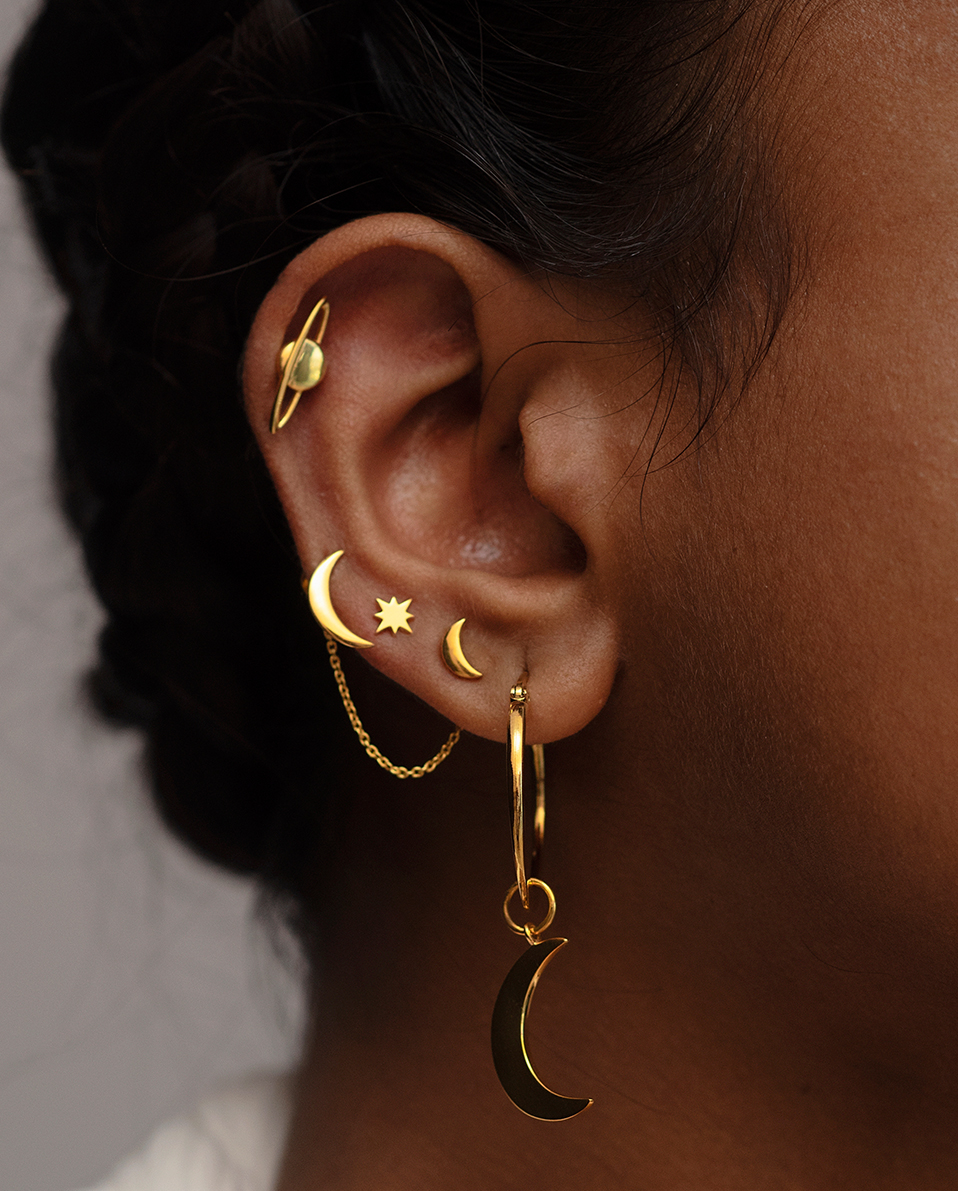
Faraway galaxies and celestial skies, sparkling constellations and luminescent Moon – we have been captivated with the universe and the secrets it holds, since the beginning of the time. And while the great mysteries of space remain unknown, we have continued to define our connection with the whimsical cosmos as guidance, inspiration, hope, or a dream. As we kept seeking solace in this mystical connection, these celestial bodies ensured a permanent place in our jewellery boxes transcending centuries and cultures, courtesy of the long-lived and comforting symbolism that balances the ideals of astrology, cultural history, and religion. So, let’s discover and capture the enduring allure of these celestial keepsakes. But first, wish upon that twinkling star in the sky!

Illustration by Lune
From Heaven to Ground Zero
The Sun, Moon, and stars remain the oldest and most recognised cosmic symbols from the Mesopotamia Era to the modern day. And though this gleaming cosmic fascination started with the Babylonians dividing the zodiacs into twelve signs in the first millennium BC, these cosmic symbols have charmed their way across civilisations and centuries. From Byzantine coins with the crescent moon and stars to the crescent moon pendants from the Roman Empire, from Persian Kingdom’s coins with different versions of crescent and star shapes to Mughal Dynasty’s crescent jewels and Victorian parure jewels with the Sun, Moon, and stars – we have forever turned to the heavens and its associated symbolism to arm us with cosmic keepsakes that might empower us, uplift our spirits, and bring us closer to the magic and force of nature. As Natasha Khurana of The Line sums up, “The sky is how we first understood and marked the idea of time, with the Sun, Moon, and the constellations. So, in that sense, the natural world was a part of our immediate world from the beginning, and eventually became a part of our symbolism, language, and ornamentation.”
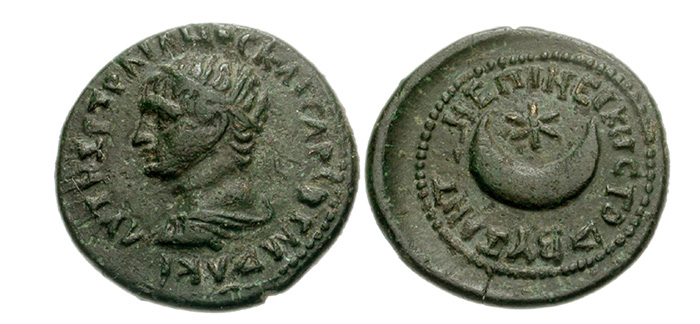
Byzantine Coin (98-117 CE)



(L-R) Persian Coin (3rd-7th Century), Lunula (Crescent Moon Pendant) from Roman Empire (1st Century AD), and Victorian Diamond Star Parure c.1870
Considering cultural and religious nuances, these cosmic motifs symbolise many different values and meanings. For instance, the Moon has always been a symbol of femininity and sublimity, though its ever-changing phases signify evolution, birth cycle, motherhood, and creativity. And Sreesha Shetty of Lune further adds, “Even with its mystical, dark, and evolving aesthetics, we can always romanticise the Moon. It even has an uncanny ability to make you happy with just a little gleam. And yes, the Moon is the centre of cosmic art and jewel space.” Then, there’s the Sun which not only symbolises abundance, strength, and success but also, light and life.
While each of the constellations represents the archetype of the respective zodiac, a five-pointed star has a multitude of meanings – be it as five pillars of faith in Islam, virtues of a chivalrous knight in Christianity, or simply, the essential elements of Mother Nature (Earth, Air, Fire, Water, and Space). Similarly, an eight-pointed star represents the North Star and is also the symbol of wealth in Hinduism. And well, we have had many Indian and International brands harness this symbolism of the Sun, Moon, and stars, and make us feel more connected and aligned with the cosmos. Like The Line’s Starburst earrings and Sunrise necklace, Lune’s Phases of the Moon and Wandering Crescent Moon necklaces, Cece Jewellery’s crescent moon ring with star-set diamonds, and Legend Amrapali’s crescent moon and stars earrings.

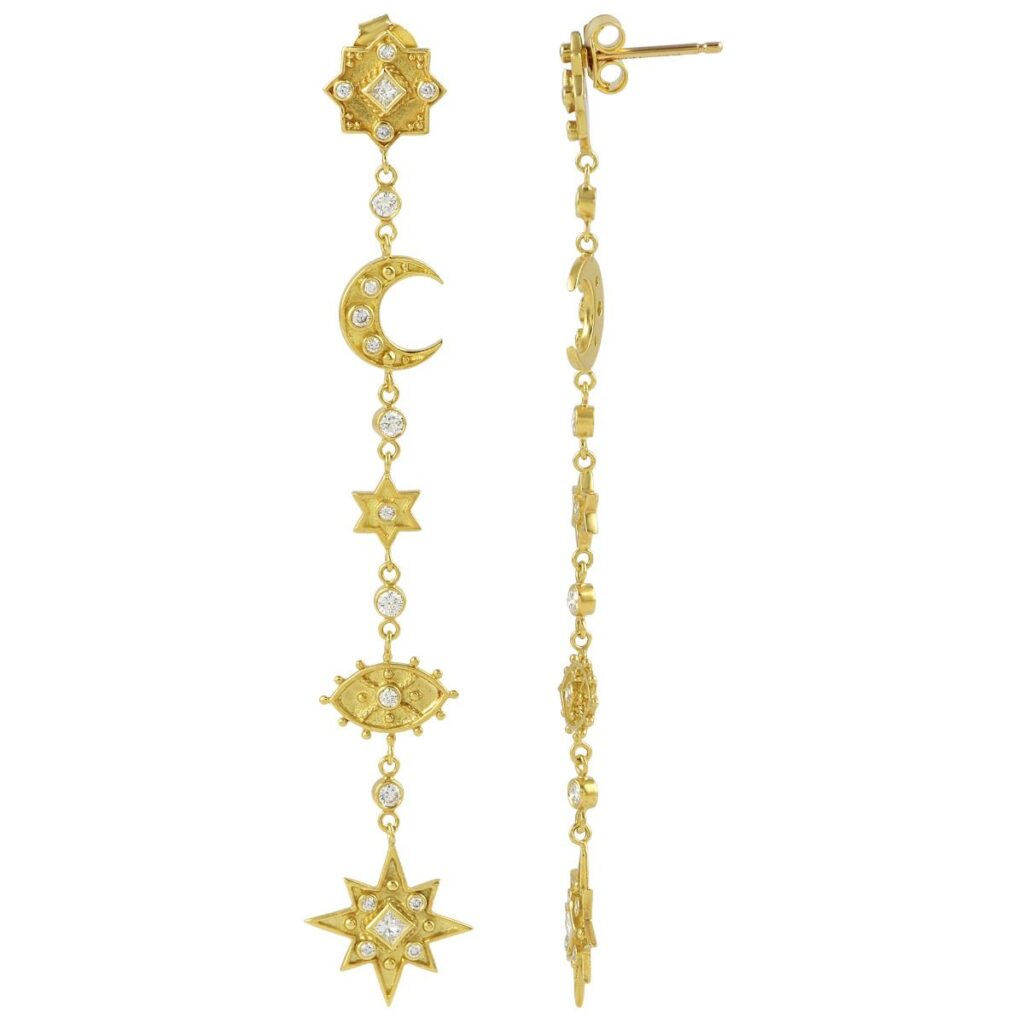




1st Row: (L-R) The Lune Sunrise Necklace, Legend Amrapali Crescent Moon & Star Earrings, and The Line Starburst Earrings
2nd Row: (L-R) Lune Phases of the Moon Necklace, Cece Jewellery Crescent Moon Ring, and Lune Wandering Crescent Necklace
Modern-Day Galaxy-Hopping
From the 20th century onwards, the jewellery world has taken this cosmic infatuation ahead with a wave of thematic astral designs – starting with Gabrielle Chanel’s first and only high jewellery collection, Bijoux de Diamants, from 1932. Inspired by the mosaic of stars at Aubaine Abbey, this collection was designed with the idea of decking up women with brilliant stars and constellations. And the legacy of these designs continues to live on even today. Just last year, Chanel introduced a high jewellery collection titled ‘1932’ in tribute to Coco Chanel’s 90-year-old original creations and the mighty cosmos. Then, as we came closer to these celestial bodies during the Space Race of 1950s-1970s, this fascination was elevated with the motifs reminiscent of space travel percolating into the designs of the most revered jewellery maisons – such as Cartier diamond-set ‘Sputnik’ brooch and rocket ear pendants (with an eight-pointed star) from the 1950s, an enamel and diamond-set ‘Moon Crater’ 1960s necklace by Roy King, and Van Cleef & Arpels’ Crater cuffs from the 1970s. While the Space Race peaked with Neil Armstrong’s first step on the moon in 1969, it continued to have a slow and steady influence on jewellery design post the 1970s. And well, that holds true even today, i.e. 55 years after the first-ever Moon landing.


Gabrielle Chanel’s Cométe Necklace c.1932 and Chanel Allure Céleste Necklace (from ‘1932’ high jewellery collection)

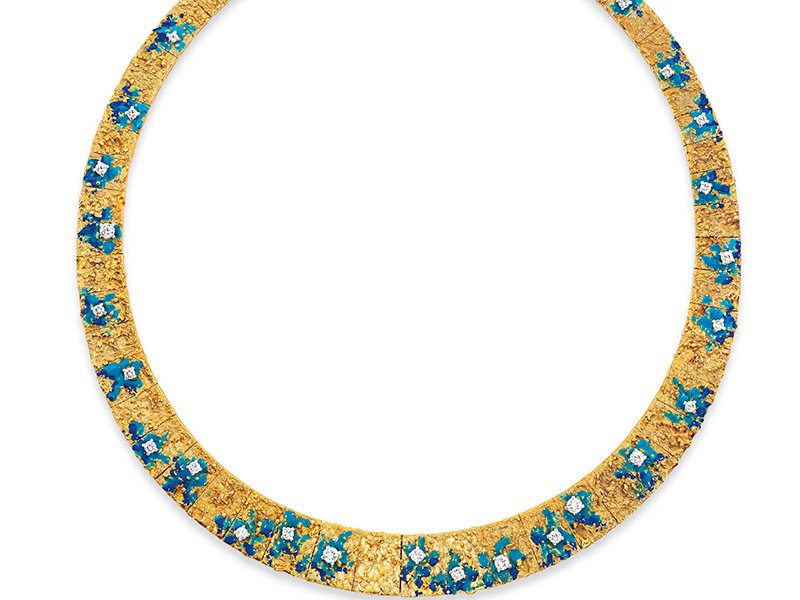
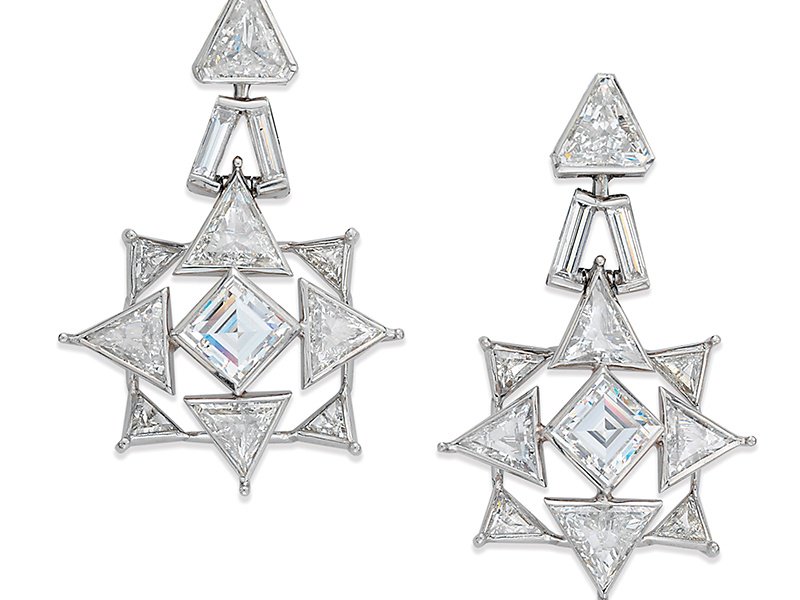
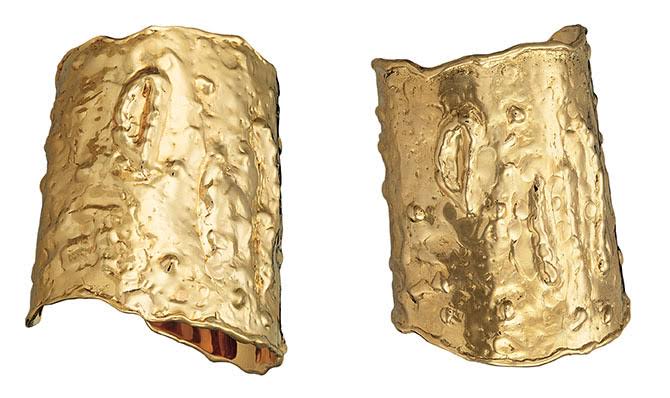
(L-R) Cartier ‘Sputnik’ Brooch c.1950s, Moon Crater Necklace by Roy King c.1960s, Cartier ‘Rocket’ Ear Pendants c.1950s, and Van Cleef & Arpels Crater Cuffs c.1970s
“Sputnik to Chandrayaan III, space missions and explorations capture our imagination, creating a sense of wonder and curiosity about the vast universe beyond our planet. They serve as a reminder of our connection to the universe, inspiring jewellery designers to create pieces that capture the beauty and mystery of outer space.” Says Akansha Arora of Amrapali Jewels. And be it Chanel or Dior, Van Cleef & Arpels or Anthony Lent, many brands have captured this cosmic craze over the years with the modern iterations of the much-loved celestial motifs and nebula-like colour palette. Case in point, the Chanel Cométe collection twinkling with diamonds and pearls set in white and yellow gold, the Dior Rose Céleste collection with double-sided Sun and Moon designs, Van Cleef & Arpels’ Sous les Etoiles (French for ‘beneath the stars’) jewels with more abstract designs and otherworldly colours, Anthony Lent’s Celestial collection of sculptured, folkloric motifs, Lune’s Celestial Record collection with carved crescent, stars, and planets, and Bibi van der Velden ‘Galaxy’ collection of 3-D miniature cosmic sculptures with Tahitian pearls, opals, sapphires, and diamonds. Simply put, when it comes to jewellery design, the sky truly is the limit. To the moon and back!



1st Row: (L-R) Chanel Cométe Collection, Dior Rose Céleste Collection, and Lune Celestial Record Pendant Necklaces

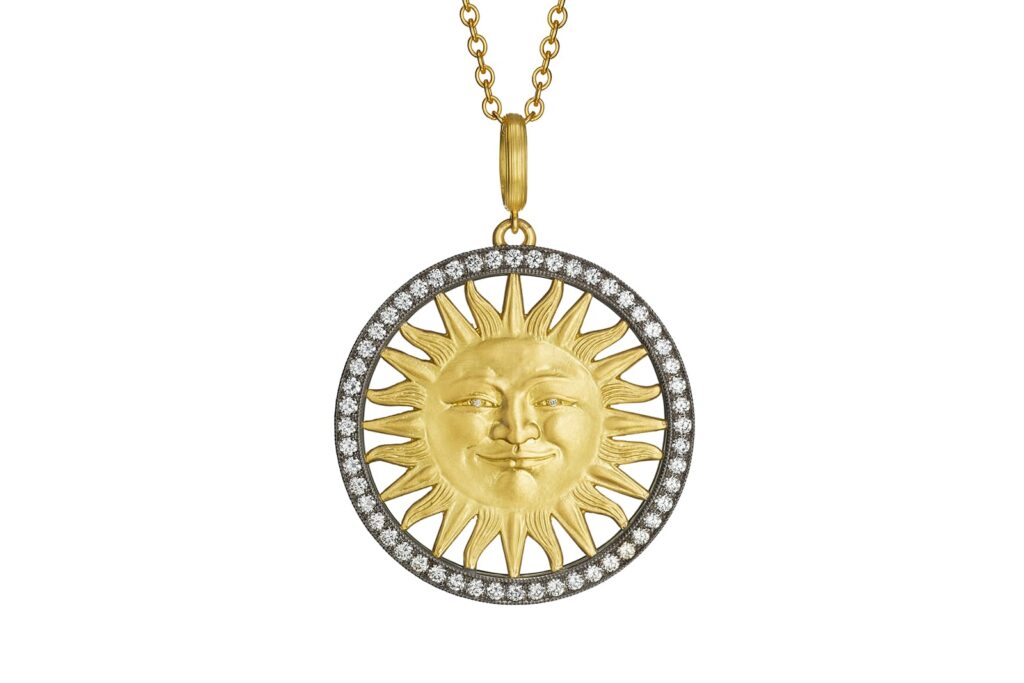
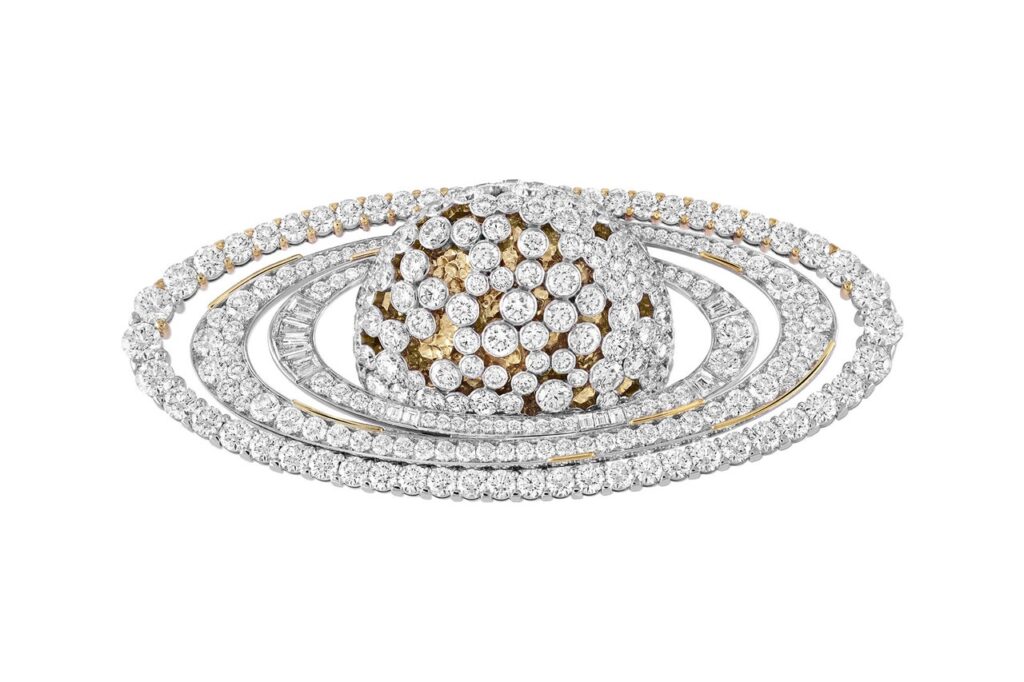
(L-R) Bibi van der Velden Galaxy Cocktail Ring, Anthony Lent Sun Pendant, and Ven Cleef & Arpels Saturn Clip
For the crescent moon motif’s dominance in traditional Indian jewels, Tarang Arora of Amrapali Jewels says, “The crescent moon motif has a cross-cultural and cross-temporal appeal as it transcends geographic boundaries and is found in jewellery from various parts of the world. And in the case of Indian jewellery, the Mughal, Hindu, and Islamic traditions have all integrated crescent motifs, showcasing how design elements can evolve and synthesise across cultures.” And through the years, the presence of the crescent as the main design element can be traced to chandbali earrings, jhoomar, mangtikka and many more Indian jewels – courtesy of the blending of the Mughal and Indian cultures. While traditional ornate chandbali style has been documented across Mughal, Rajasthan, and Hyderabad dynasties, a more contemporary early 20th century too has been recorded from the collection of Baroda and Surat royal families. Seems like chandbalis have been the rage since then! And to keep up with the popularity of chandbali earrings, the designers and brands today have a lot more designs to offer – from the minimal diamond design to antique ornate style – with varied diamond types and settings and gemstones resulting in a harmonious blend of tradition and innovation. Just like Moi Mehnoor earrings with uncut and pave-set rose-cut diamonds in a Victorian-influenced setting, The Line’s very minimal yet luxe chandbali earrings with rose-cut diamonds and Gemfields Zambian emeralds, Tribe Amrapali’s traditionally ornate chandbalis, and Namrata Singh’s modern yet elaborate chandbali style with pearls, rubies, and zircons.


Rose-cut Golconda Diamond Chandbali from Victoria & Albert Museum (donated by Princess Naheed Mazharuddin Khan of Surat), c.1900 and Diamond & Emerald Chandbali by Van Cleef & Arpels (formerly in the collection of Maharani Sita Devi of Baroda), c.1950
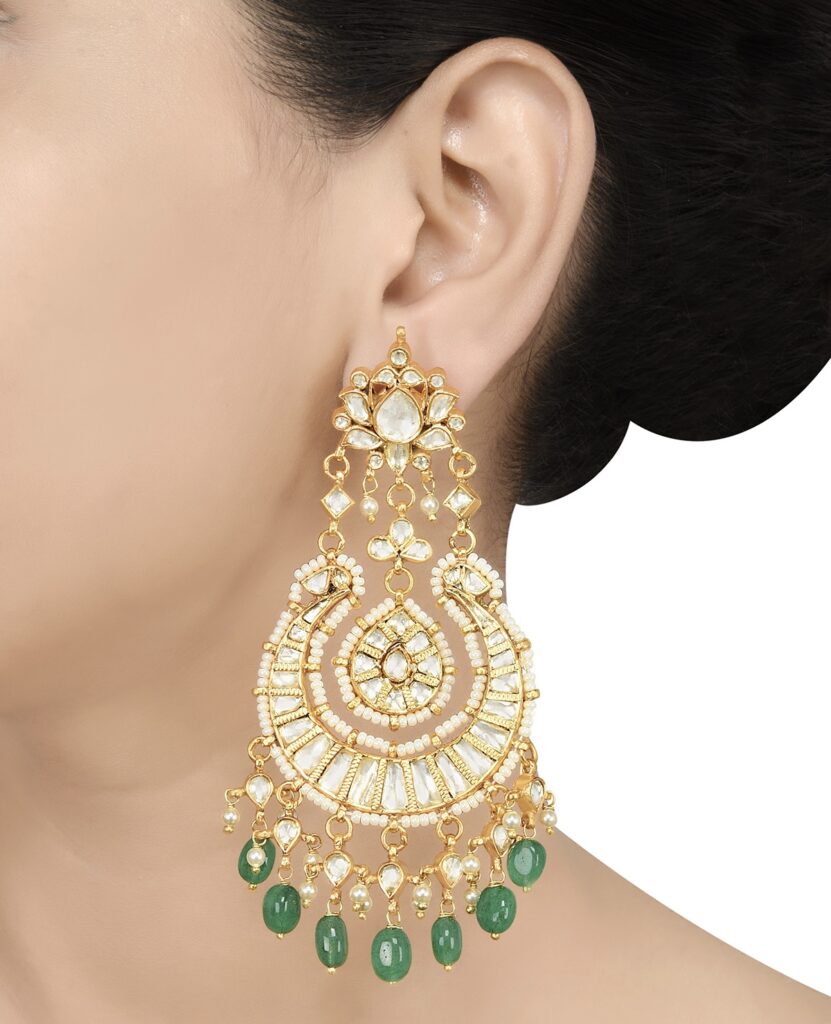

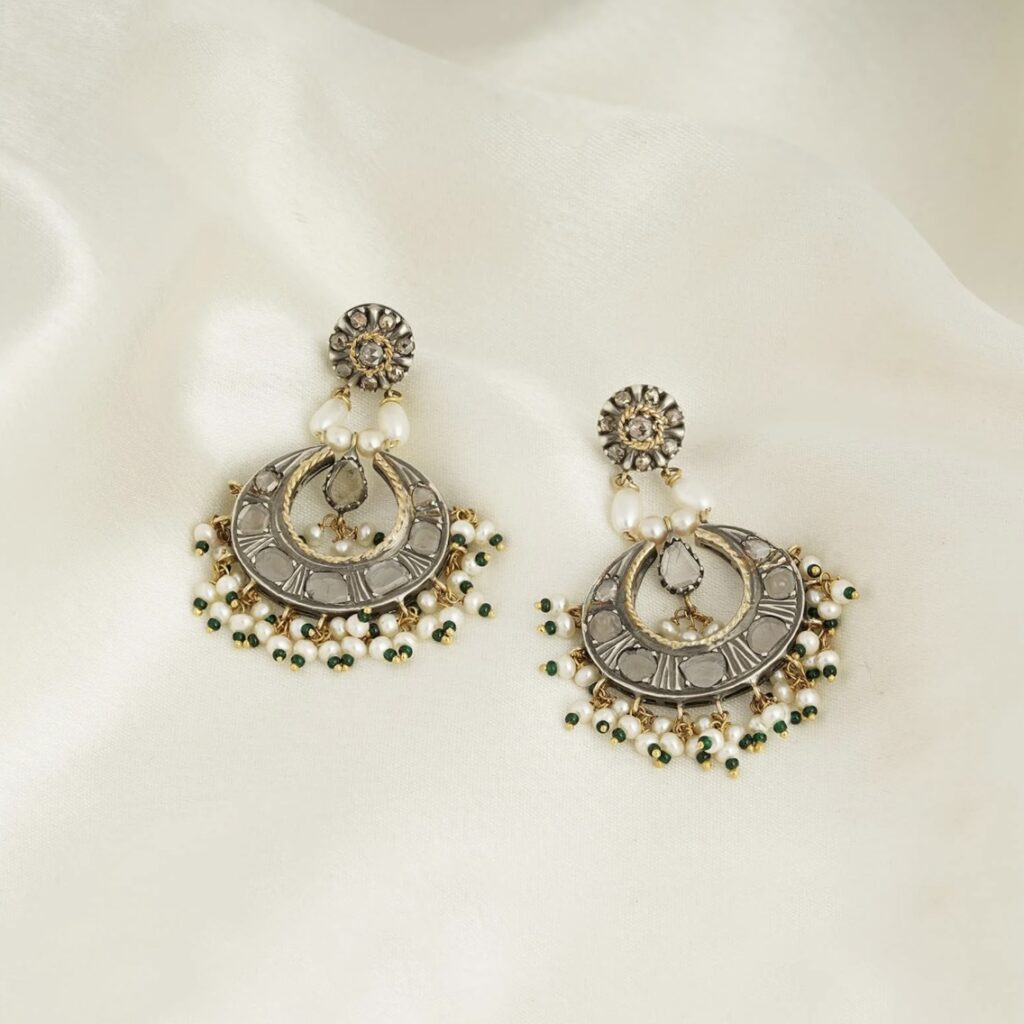
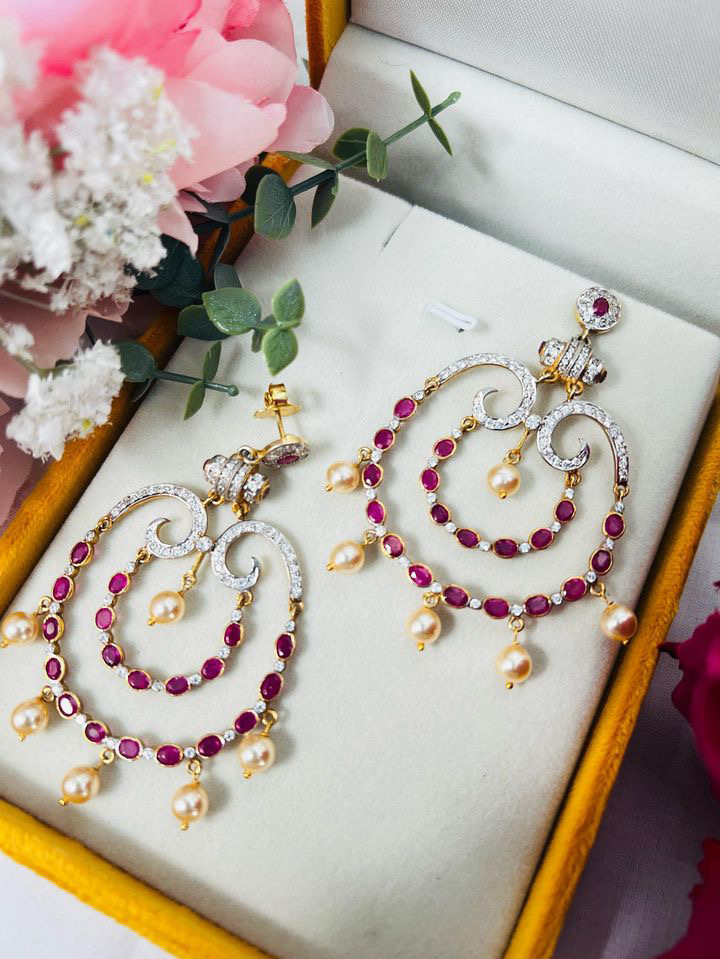
(L-R) Tribe Amrapali Chandbalis, The Line Chandbali Earrings, Moi Mehnoor Earrings, and Namrata Singh Ruby Chandbali Earrings
Getting Personal with Stars & Stones
The unmatched sparkles that the stars offer can always turn any night into a sparkling night of dreams! And it’s no surprise that our enchantment with the wonder of the sky has also morphed into astrological jewels with constellations, zodiac signs, and horoscopes being the focal point. Though Mughal Gold zodiac coins from Emperor Jahangir’s reign (early 17th century) are one of few early examples of astrology’s luminescent allure, the zodiac jewels really took hold of the cosmic jewellery space from the 1970s onwards with a booming interest in space and spirituality. And many jewellery maisons (like Cartier and David Webb) responded to this craze with pendants and bracelets depicting the constellations and the associated zodiacs. Now, these zodiac jewels have been back in the style realm over the past years, courtesy of the heightened social media exposure, the nostalgic style renaissance, and the craving for a simple and more secure world.

Gold Zodiac Coins From Emperor Jahangir’s Reign (early 17th century)
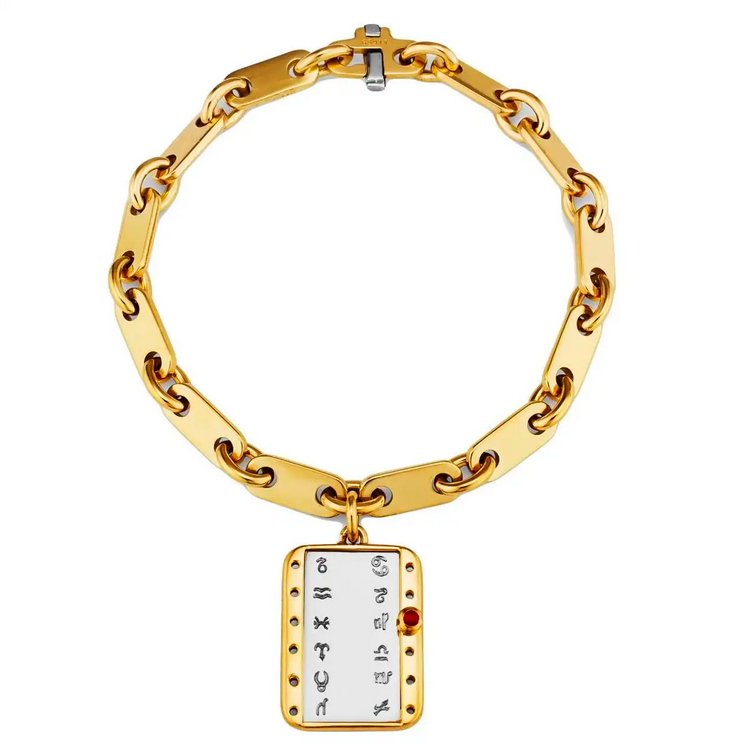
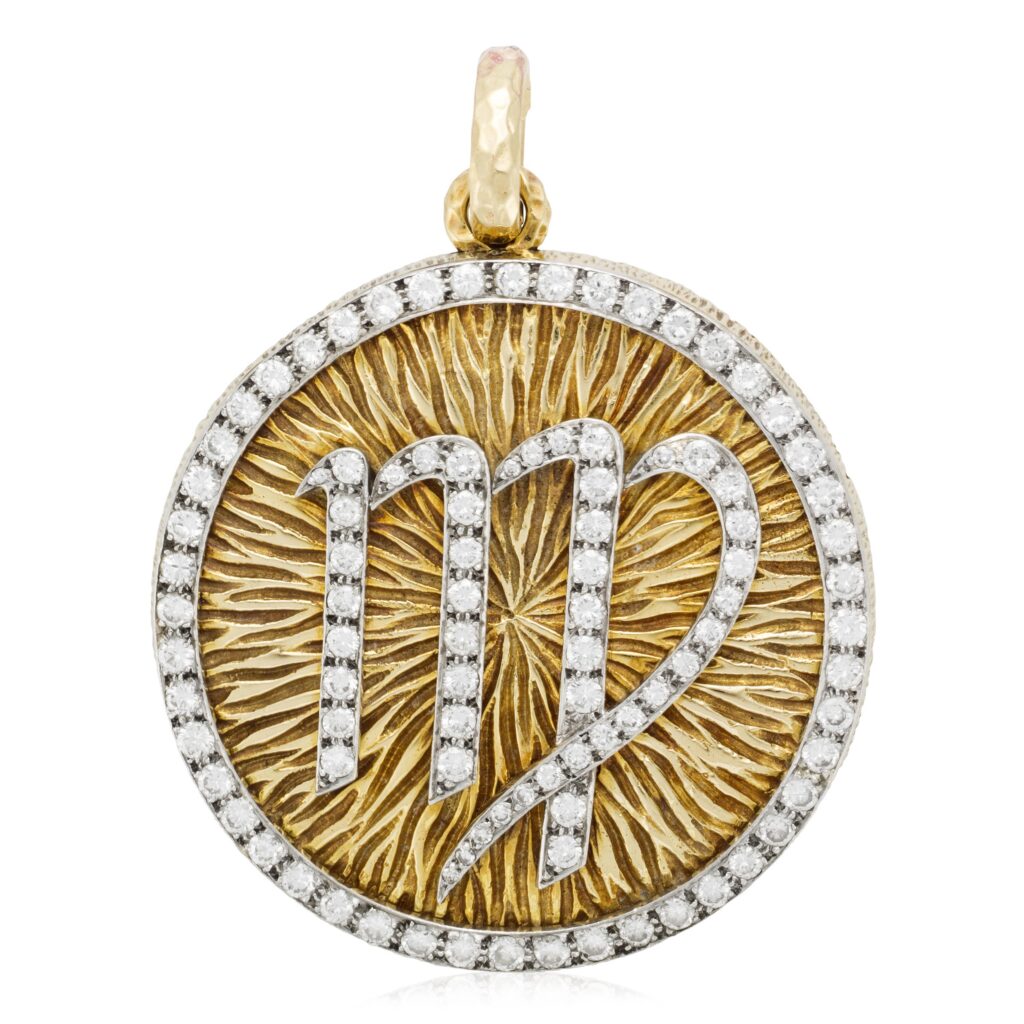
Cartier Zodiac Bracelet and David Webb Zodiac Pendant & Pin, c.1970
Capturing their universal lure and whimsy, the brands have created zodiac jewels with a distinctly personal connection to their wearer, i.e. Venyx’s zodiac coins with a centre stone (typical of the sign itself) and the constellation map with a personalised short phrase, Alighieri’s molten-like 24kt Gold-plated coins depicting animals of the Chinese zodiac, and Andrea Fohrman’s moon-phase collection reminding the wearer of the cycle in the Lunar calendar at the time of their birth, and The Line’s zodiac coin medallion collection of necklaces and bracelets. That’s not all, Lune who has forever celebrated the mystical charm of the moon and friends is releasing a zodiac collection by the end of the year, along with The Line launching its second zodiac edit after the success and popularity of the first zodiac collection since the 2018 launch.

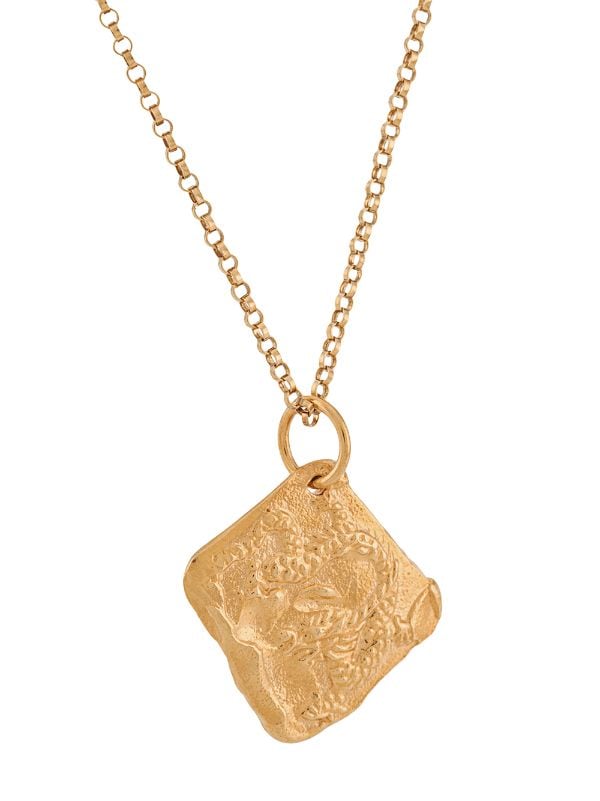
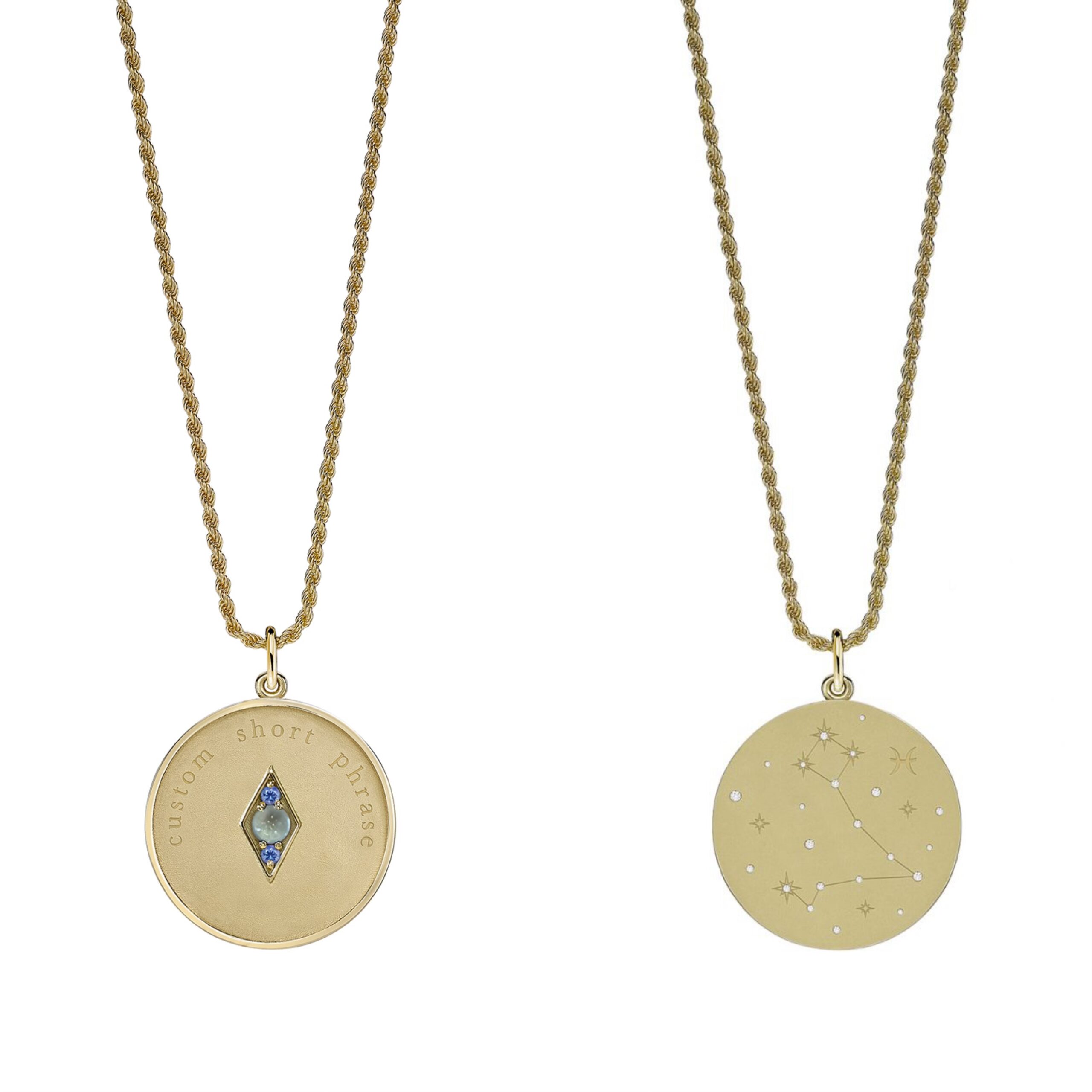
(L-R) Andrea Fohrman Waxing Sliver Phase of the Moon Necklace (corresponding to Lunar phase on my birth date), Alighieri Year of the Dragon Necklace, and Venyx Zodiac Coin
Well, zodiac jewels are definitely a celestial keepsake that embodies our spirit more precisely than any other piece of jewellery. But, here in India, gemstones lie at the very core of this concept, as they are known to be charged with energies from astral influences. “Astrological jewellery in India is a combination of cosmology, astrology, religion, and Vedic studies. According to one of the Vedic studies, it considered that many millennia ago, many of the gemstones had fallen from the sky onto the Earth, and that’s why they are understood to possess cosmic energies – with the name and characteristics derived from the planets and other celestial bodies of the Solar System. Gemstones, from pearls to rubies, can balance the associated planetary energy, but only with a suitable spiritual connection with the wearer.,” explains Samarth Kasliwal of The Gem Palace. And Tarang further adds, “These gemstones are also used to capture the essence of celestial bodies, besides capturing the energy of the planets. For example, moonstone, opal, and selenite are often associated with the Moon, while sunstone and citrine are linked to the Sun.”
From stars to stones, Navratna (Nav means ‘nine’ and ratna means ‘gemstones’) connects all the dots of the universe with its symbolic arrangement of nine gemstones. The nine gems represent the celestial bodies as per Indian astrology – the Sun (ruby), the Moon (pearl), Mercury (emerald), Mars (coral), Jupiter (yellow sapphire), Venus (diamond), Saturn (blue sapphire) along with the rising (hyacinth or zircon) and descending (cat’s eye) nodes of the Moon. Considered the most essential and powerful talisman in Indian astrological jewels, it is known to protect the wearer from the negative planetary energies and strengthen the positive benefits of the different gemstones, bringing good health, wealth, and mental strength. Set in a linear or circular arrangement, Navratna jewels have now been reinterpreted to fit Modern Indian aesthetics by distilling the codes of the Navratna pattern to their basic essence – like the Moi navr ring, Zayn by Sunena Navaratna bangle, and Anumerton Navratna ear cuffs.

Navratna From Indian Astrology, Image Courtesy: Jewels of Sayuri
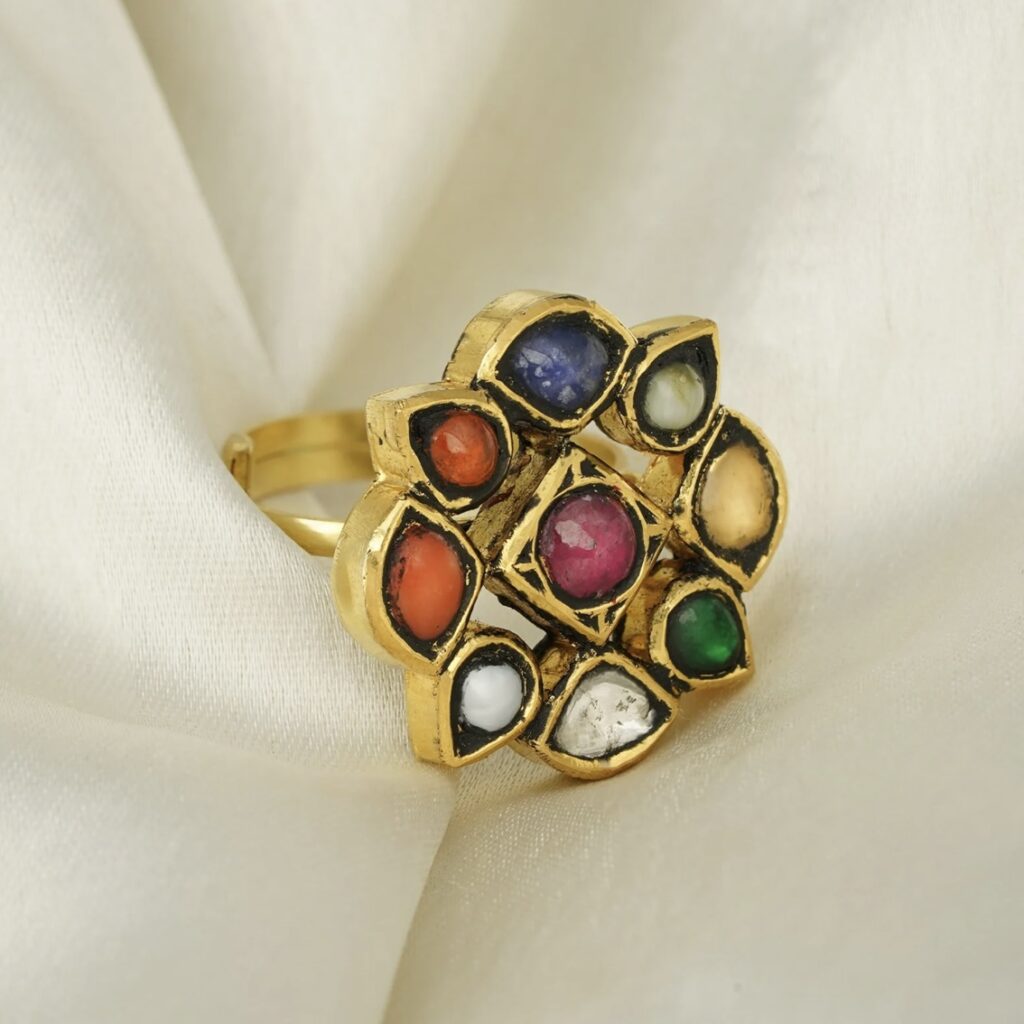
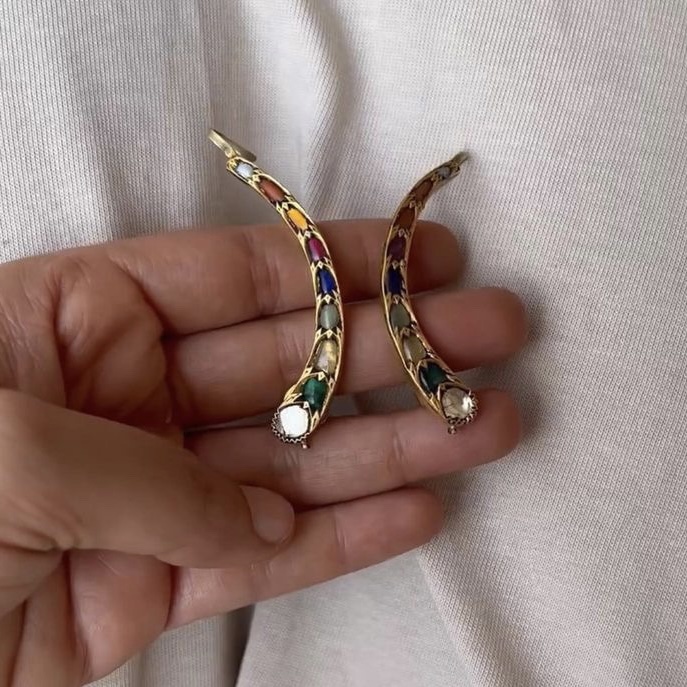

(L-R) Moi Navr Ring, Anumerton Navratna Ear Cuffs, and Zayn by Sunena Navratna Bangles
Symbol of known and unknown, hope and desires, humankind and the otherworldly – the mystical universe continues to be a point of inspiration and aspiration for us all. And as Natasha puts it,” The sky and all its components have us all in thrall and drive up our curiosities by concealing its great mysteries and reflecting on our big existential questions like why are we here on this planet and more.” Well, jewellery is definitely a wonderful way to capture a little piece of that heavenly allure and magic. Doused in cosmic symbolism, cultural history, and the trending cult of the moon and stars, these celestial jewels are a treasured keepsake, the carrier of a secret wish, or simply, a delightfully gleaming metaphor. Yes, dreams are still found among the diamond stars and an opal full moon in the onyx sky. Just look up!
Karishma is a science nerd turned fashion and beauty writer who loves talking about trends as much as eating desserts. Gucci, salted caramel ice-cream, jewels, and Simba (her dog) make up four chambers of her heart. Like Karishma’s story? Drop her a line in the comments section below.




